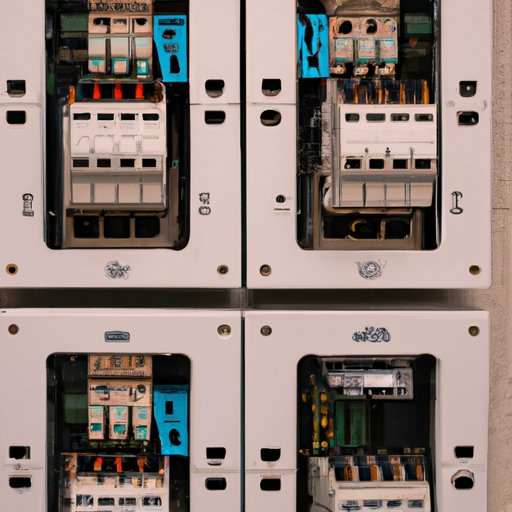Introduction
When a breaker trips, it means that there is an issue with one of the circuits in your home. A tripped breaker can cause major inconvenience and potential safety hazards, so it’s important to take action as soon as possible. Before attempting to fix the problem yourself, it’s important to understand what causes a tripped breaker and what steps you should take to troubleshoot the issue.
Definition of a Tripping Breaker
A tripped breaker occurs when the electrical current flowing through a circuit exceeds the amount that the breaker is designed to handle. When this happens, the breaker will trip, or switch off, and the electricity to the circuit will be shut off. The breaker is designed to protect the circuit and the appliances connected to it from overloads, which can cause fires or other damage.
Overview of Problem
When a breaker trips, it’s important to take action quickly to prevent further problems. Most often, the problem is caused by an overloaded circuit, a faulty breaker panel, or faulty wiring. Knowing what the root cause of the problem is will help you determine the best way to fix it.

Causes of a Tripped Breaker
There are several common causes of a tripped breaker. Identifying the cause of the problem will help you determine the best course of action for fixing it.
Overloaded Circuits
One of the most common causes of a tripped breaker is an overloaded circuit. This happens when too many appliances are plugged into the same circuit. Overloading a circuit can cause the breaker to trip and shut off the power to the circuit. To prevent this from happening, make sure not to plug too many appliances into the same circuit.
Faulty Breaker Panel
Another possible cause of a tripped breaker is a faulty breaker panel. The breaker panel is responsible for distributing electricity to each circuit in your home. If the breaker panel is malfunctioning, it can cause the breaker to trip and shut off the power to the circuit. In this case, you may need to have the breaker panel inspected and replaced by a professional.
Faulty Wiring
Faulty wiring can also be the cause of a tripped breaker. Faulty wiring can cause an overload on the circuit and lead to the breaker tripping. If you suspect that the wiring is the cause of the problem, it’s important to have it inspected and repaired by a professional electrician.

Steps for Troubleshooting the Problem
Once you have identified the cause of the problem, you can begin to troubleshoot it. Here are some steps to follow to help you fix the problem:
Check for Overloaded Circuits
The first step is to check for overloaded circuits. Try unplugging some of the appliances that are plugged into the circuit and see if that fixes the problem. If so, then you know that the problem was caused by an overloaded circuit.
Inspect the Breaker Panel
If unplugging the appliances doesn’t fix the problem, then it’s time to inspect the breaker panel. Look for any signs of wear or damage and make sure all the connections are secure. If you find any issues, then you may need to have the breaker panel inspected and replaced by a professional.
Replace the Breaker
If the breaker panel looks fine, then you may need to replace the breaker. Make sure you purchase a breaker that is compatible with your home’s wiring system. Once you have installed the new breaker, turn it on and see if the problem is solved.
Check all Outlets Connected to the Circuit
Next, check all outlets connected to the circuit. Make sure they are all functioning properly and that none of them are damaged or short-circuited. If you find any issues, then you may need to have the outlets inspected and repaired by a professional.
Unplug Major Appliances
If you have any major appliances connected to the circuit, such as a refrigerator or air conditioner, try unplugging them and see if that solves the problem. If so, then you may need to have the appliance inspected and repaired by a professional.
Have a Professional Inspect and Repair the Wiring
If none of the above steps solve the problem, then it’s likely that the problem is caused by faulty wiring. In this case, it’s best to have a professional inspect and repair the wiring. This will ensure that the problem is fixed properly and safely.
Install a Power Surge Protector
Finally, to prevent future problems, consider installing a power surge protector. A power surge protector will help protect your electronics from power surges and help prevent your breaker from tripping.
Conclusion
If your breaker keeps tripping, it could be caused by an overloaded circuit, a faulty breaker panel, or faulty wiring. To troubleshoot the problem, start by checking for overloaded circuits, inspecting the breaker panel, and replacing the breaker. Then, check all outlets connected to the circuit and unplug any major appliances. If the problem persists, have a professional inspect and repair the wiring. Finally, consider installing a power surge protector to help prevent future problems.
(Note: Is this article not meeting your expectations? Do you have knowledge or insights to share? Unlock new opportunities and expand your reach by joining our authors team. Click Registration to join us and share your expertise with our readers.)
